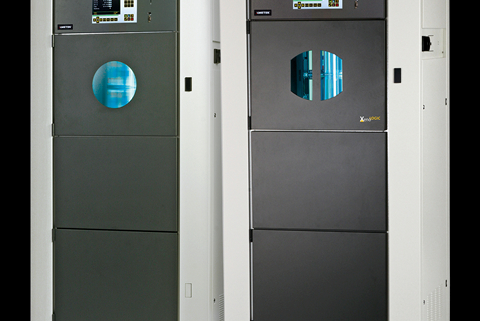Compact Entry Rotating-Rack Series of Weather Testers Expanded
Atlas’ Xenotest now also available to meet American standards.

Atlas Material Testing Technology has expanded the performance capabilities of their Xenotest 440 and Xenotest 220/220+ xenon-arc instruments to conform to major American testing standards. Used by a wide range of industries, air-cooled Xenotest instruments simulate on an accelerated basis the effects of natural sunlight, moisture and heat to predict the service life of products, materials and formulations. While the Xenotest series has previously focused on European standards, the new enhancements allow these instruments to meet the specific testing requirements for American markets, including ASTM G155 for weathering testing of polymers.
The introduction of the Xenotest performance extensions – Right Light high-fidelity filter technology and Xenosensiv 340/420 BPT-C sensors – reportedly propel Atlas' compact rotating rack instruments into the premier league of xenon weathering instruments. Previously available only for Atlas’ flagship Ci Weather-Ometers, the company’s Right Light, said to provide the most precise match to natural sunlight, was introduced to the Xenotest 220+ in 2022 and is now available for the more powerful Xenotest 440. With Right Light, Xenotest instruments are capable of meeting the most recent American weathering and lightfastness testing standards, including ASTM G155 for plastics and ASTM D7869 for transportation coatings, as well as International standards, such as ISO 4892-2.
Unlike European weathering testing instruments, which rely on broad-band 300-400 nm light monitors and insulated black panel temperature sensors (BST), American standards specify 340/420 nm narrow-band light monitors and unisulated black panel temperature sensors (BPT) Designed for the American market, the new Xenotest control sensors—available as options for both the Xenotest 220+440—provide one narrow-band 340 nm and one narrow-band 420 nm Xenosensiv light monitor. Both come with a connected American-style BPT sensor
Related Content
-
Thin, High-Performance Nylon/PE Barrier Film for Thermoformed Packaging
Südpack’s Multifol Extreme film is well suited for greasy, protein-rich and frozen foods
-
Paperless ‘Smart Factory’ Based on Automated Production Monitoring
Tier 1 automotive molder’s home-built production-monitoring and ERP systems, designed for “the little guy,” boost its efficiency rating and profits.
-
Get Color Changes Right In Extrusion Blow Molding
Follow these best practices to minimize loss of time, material and labor during color changes in molding containers from bottles to jerrycans. The authors explore what this means for each step of the process, from raw-material infeed to handling and reprocessing tails and trim.












